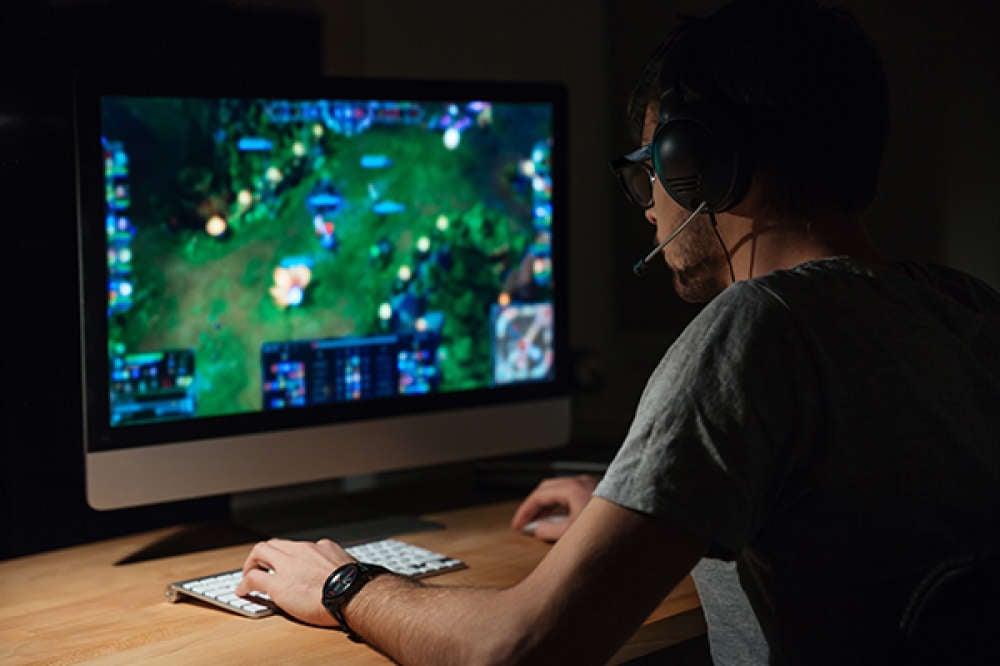A large body of literature is examining the strong relationship between social anxiety disorder (SAD) and addictive behaviors of using cannabis and alcohol.1, 2 Generally speaking, the research shows that individuals who have SAD are significantly more likely to develop problematic substance use than those without SAD.3 But what about other addictive behaviors? What about, say…video games?
Video Games and Addictive Behavior
Previous studies on the effects of video games, particularly massively multiplayer online role playing games (MMORPG), have shown that MMORPGs can enhance an individual’s self-esteem and ability to connect with others.4, 5 Such benefits likely stem from creating a customizable avatar and a social structure within the game to communicate with other players. This fosters connecting with other players as a character from a safe virtual space.
However, while playing such video games in moderation can be beneficial, overuse can be problematic and harmful. In fact, growing evidence indicates that it is possible to become addicted to playing video games. Internet gaming disorder (IGD)6 is like other addictive behaviors, and it can be diagnosed in individuals who have at least five of the following nine criteria:
-
- Preoccupation with playing video games
- Tolerance for the growing amount of time needed to play games
- Withdrawal symptoms when not playing video games
- Inability to cut back or quit playing video games
- Loss of interest in other activities or hobbies
- Continued playing video games despite negative personal consequences
- Hiding or lying about the amount of time spent playing
- Playing to escape or find relieve from negative emotions or stressors
- Conflicts with other people as a result of playing video games
Video Games and SAD
To examine the relationship between SAD and IGD, researchers at Arizona State University and the California School of Professional Psychology conducted a study of 394 individuals who play MMORPGs.7 The participants assessed their symptoms for IGD and SAD, as well as how strongly they identified with their avatar.
The results indicated that greater levels of SAD are associated with greater levels of IGD, and that the relationship between the disorders may be explained by how strongly the participants identified with their avatars. In short, greater levels of SAD were related to stronger identification with an avatar, which was related to greater levels of IGD.
According to the study authors, individuals with SAD may experience less anxiety when they interact with others through their avatar, which leads to greater identification with the avatar and increased video game playing.
Does SAD Lead to IGD?
Not necessarily. Because the study was cross-sectional—meaning it examined many people at one time—it’s not clear if greater levels of one variable (having SAD) led to another (stronger identification with an avatar or an increase in playing). But the results do indicate that they are at least related.
If you experience social anxiety and you also play video games, it may be helpful to monitor your reasons for playing. Are they your primary source of social support and interaction? Or are they truly just entertaining games? Understanding the factors behind what could become problematic video game playing may just help you prevent the onset of IGD.
Sources
1.Buckner, J.D., Heimberg, R.G., Schneier, F.R., et al. (2012). The relationship between cannabis use disorders and social anxiety disorder in the National Epidemiological Study of Alcohol and Related Conditions (NESARC). Drug and Alcohol Dependence, 124, 128–134
2. Grant, B. F., Stinson, F. S., Dawson, D. A., Chou, S. P., Ruan, W. J., Pickering, R. P. (2004). Co-occurrence of 12-month alcohol and drug use disorders and personality disorders in the United States: Results from the national epidemiologic survey on alcohol and related conditions. Archives of General Psychiatry, 61, 361–368.
3. Back S. E., & Brady, K. T. (2008). Anxiety disorders with comorbid substance use disorders: Diagnostic and treatment considerations. Psychiatric Annals, 38(11), 724-729.
4. Billieux, J., Van der Linden, M., Achab, S., Khazaal, Y., Paraskevopoulos, L., Zullino, D., et al. (2013). Why do you play World of Warcraft? An in-depth exploration of self-reported motivations to play online and in-game behaviours in the virtual world of Azeroth. Computers in Human Behavior, 29(1), 103-109.
5. Odrowska, A. M., & Massar, K. (2014). Predicting guild commitment in World of Warcraft with the investment model of commitment. Computers in Human Behavior, 34, 235-240.
6. Lemmens, J. S., Valkenburg, P. M., & Gentile, D. A. (2015). The internet gaming disorder scale. Psychological Assessment, 27(2), 567.
7. Sioni, S. R., Burleson, M. H., & Bekerian, D. A. (2017). Internet gaming disorder: Social phobia and identifying with your virtual self. Computers in Human Behavior, 71, 11-15.
Carol S. Lee is a clinical psychology doctoral student at the University of Massachusetts Boston, with a background in psychology from the University of California San Diego. Her research with Dr. Sarah A. Hayes-Skelton focuses on understanding the effectiveness of anxiety disorder treatments, especially in the context of engaging in behavior despite fear or anxiety. Carol and Dr. Hayes-Skelton co-author articles for Anxiety.org, blending social and clinical psychology in their work.



